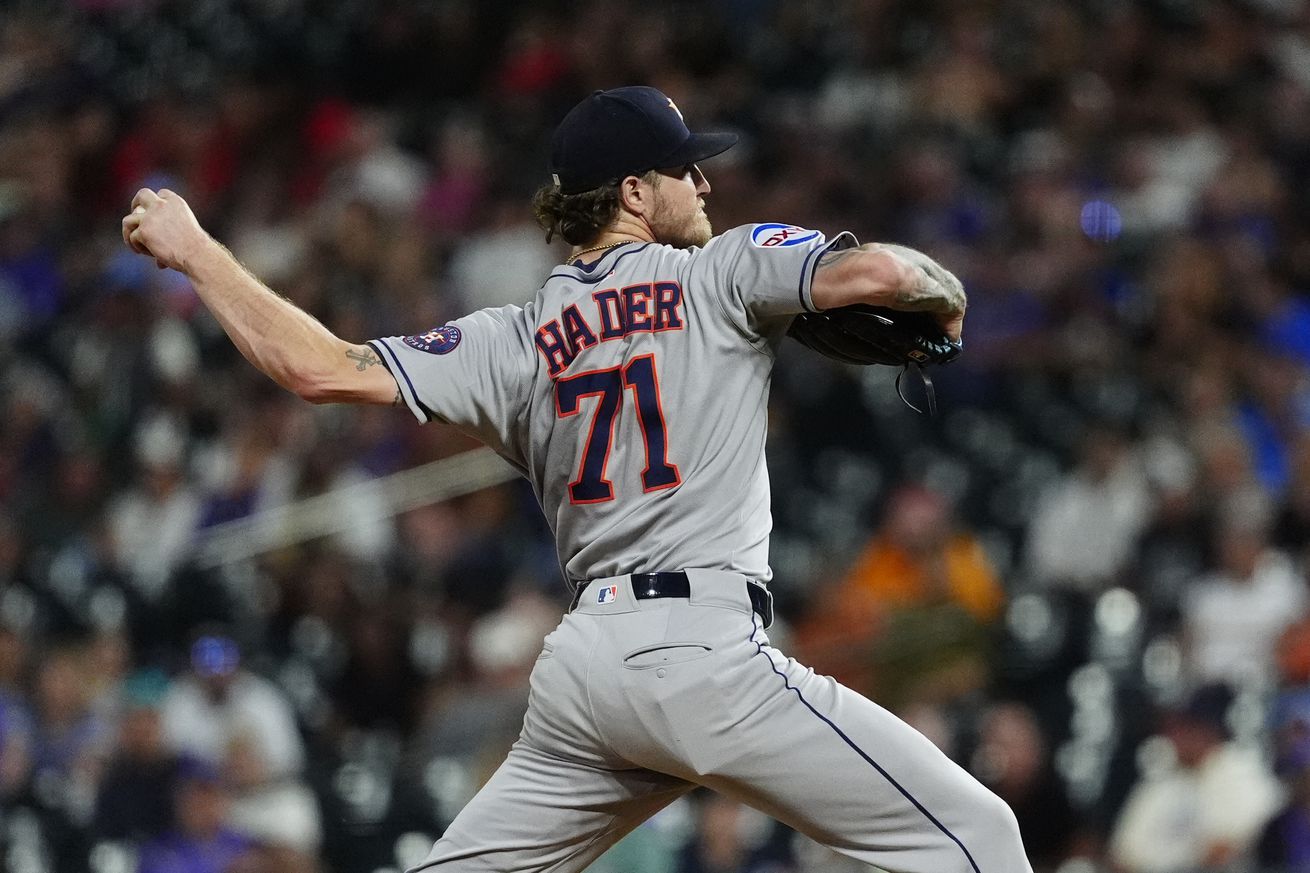
I was very much on the fence about the Astros signing Josh Hader to a five-year, $95 million contract before the 2024 season. Usually, I don’t think long-term deals with relievers at that level of money are prudent decisions in terms of roster construction. However, I do appreciate the urgency of signing the best reliever available when Kendall Graveman was sidelined with shoulder surgery that offseason. Signing Hader to a deal of that magnitude made more sense for a contender like the Astros than for most teams. There’s a point where a signing might not seem the best “analytical” decision, but where a team is positioned in its competitive cycle can justify taking a risk in free agency.
Following an up-and-down 2024, Hader has rebounded noticeably this season, allowing only eight earned runs across 40 innings (1.80 ERA). He’s also struck out 61 compared to only seven walks. The overall results up to now are quite reminiscent of Hader’s peak, although with some pitch usage adjustments as he continues to embrace more of his slider at the expense of his sinker.

Overall, Hader has been one of the best relievers in baseball this season. There are only a handful of relievers, at best, who are pitching better than he has. He’s a key reason why the Astros have accumulated the most value from their bullpen compared to the league.
Bullpens by fWAR Through July 7
- Astros: 5.2
- Twins: 5.0
- Padres: 4.4
- Red Sox: 4.0
- Dodgers: 3.5
With a 40% strikeout rate and a walk rate (4.6%) that would qualify as a career-best if the season finished today, there isn’t much to nitpick about Hader’s performance this season. He has been dominant thus far, and the hope is that he maintains this level of performance for the remainder of the season. Of course, such a hope isn’t probable, as some regression is certainly possible, especially if a potential issue becomes a certified problem. For Hader, I think that possibility lies within his batted ball profile.
Of all pitchers with at least 50 innings pitched last season and 40 innings pitched in 2025, Hader is tied with Casey Mize for the largest increase in fly ball rate (12.6%) from 2024 to 2025. If the season finished today, Hader’s 65% fly ball rate would easily be a career-high. Most of that increase has come at the expense of his ground ball rate (16.3%), with a decline of 14.1% compared to last year. No other pitcher, using the same criteria as earlier, has seen a larger decrease in their ground ball rate.
More fly balls and fewer ground balls for a pitcher isn’t an optimal development, at least in terms of how much more valuable the former is for hitters compared to the latter. For Hader, though, his results have improved. A couple of percentage points increase in strikeout rate has helped to some degree, but we can likely chalk a good chunk of that improvement to randomness. It also helps that Hader isn’t allowing more pulled fly balls, which are considered more valuable than straightaway or opposite-field fly balls.
- Pull AIR%: 23.5% (23.8% in 2024)
- Straight AIR%: 27.2% (25.9% in 2024)
- Oppo AIR%: 33.3% (20.4% in 2024)
This increase in fly ball rate is an interesting subplot to monitor with Hader. So far, this development hasn’t led to any negative consequences. But it all seems to hinge on the quality of the fly balls he allows. If opposing hitters start pulling those fly balls more, then perhaps we’ll see more of an issue arise. In any case, I plan to write about this topic again, but I thought today’s post served as a good primer.